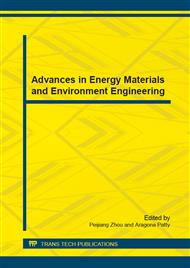p.3
p.7
p.12
p.16
p.20
p.24
p.28
p.33
Development of Software for Analyzing of Solar Irradiance and Sizing of Stand-Alone PV Power Systems
Abstract:
An analyzing software was developed for studying the solar irradiance on the Universidad Militar Nueva Granada (UMNG) Campus, as well as for sizing a stand-alone photovoltaic (PV) system in terms of power generation and energy storage, which is intended to be part of an hybrid DC smart grid with several energy sources, including not only solar but additional renewable. This software has a two stage sequential structure: First, it let to calculate the total solar energy resource and define the average irradiance and its variability for several user-defined periods, i.e. daily, monthly, annual and even multiannual. Simultaneously, the software gives the user a graphical data variation, where irradiance in hours of bright sunlight (at Standard Test Conditions - STC: 1 kWh/m2) and variability are organized in a period range (hours, days or months). The sizing stage let to define the system architecture in terms of modules and batteries, i.e. estimate PV network and battery bank. Finally, after providing load, voltage level and autonomy, it proceeds to calculations, considering factors of safety.
Info:
Periodical:
Pages:
16-19
Citation:
Online since:
December 2014
Authors:
Keywords:
Price:
Сopyright:
© 2015 Trans Tech Publications Ltd. All Rights Reserved
Share:
Citation:


